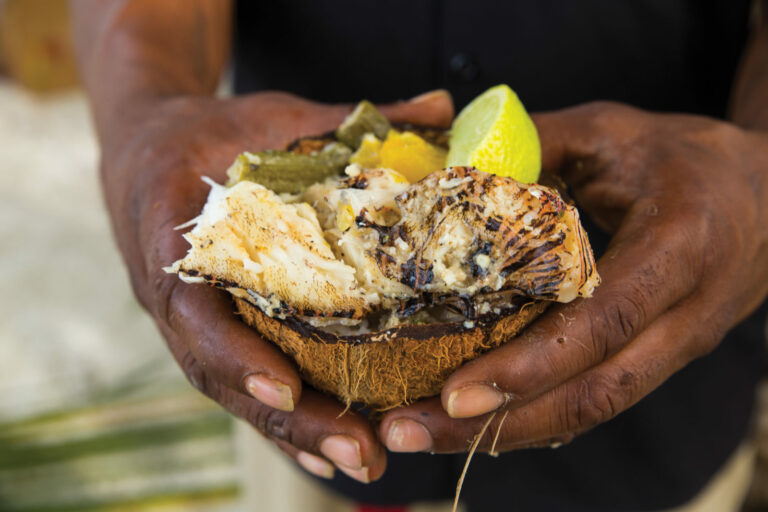A new study by Blue Ventures offers a potential solution to the growing threat posed by non-native invasive lionfish in Belize. The study, published in Marine Policy, suggests that the creation of a commercial fishery could help to curb lionfish numbers, whilst offering an alternative livelihood solution to Belize’s small scale fishing communities.
Located on the Caribbean coast of Central America and flanked by the second longest barrier reef in the world, Belize is a nation reliant upon marine resources. But existing threats posed by declining fish stocks were exacerbated by the introduction of the invasive non-native red lionfish Pterois volitans in 2008.
The increase of lionfish in Belize
Originally thought to have been introduced to the Caribbean by release from aquaria, lionfish have a higher reproductive rate than similar-sized native reef fish in Belize, and lack natural predators thanks to their venomous spines. These unique characteristics have enabled them to establish in a diverse range of habitats, and at depths of up to 300m across the region, where they threaten to out-compete native and commercially important species.
Blue Ventures field scientists and expedition volunteers began surveying lionfish populations in Bacalar Chico Marine Reserve, northern Belize, in 2010. Our results show that the size and abundance of lionfish have increased over the past four years of monitoring and that eradicating the species is now unlikely to be possible. However studies elsewhere in the Caribbean suggest that reducing the size of lionfish populations to below a critical threshold may be sufficient to boost native fish populations.
Fishing lionfish for human consumption offers a cost-effective and feasible approach to achieving this.
Alternative livelihood opportunities
As well as supporting the lionfish population suppression, the development of a profitable market for lionfish could help alleviate pressures on over-exploited native fisheries and potentially offer an accessible alternative livelihood for existing small scale fleets.
As part of the research, an initial pilot survey was conducted in three of Belize’s major Northern fishing villages to investigate consumer demand for lionfish. The majority of respondents who had tried lionfish liked the taste, frequently likening it to hogfish, one of Belize’s most expensive fish. Respondents also said that they would be willing to eat lionfish either at home or at a restaurant, indicating considerable domestic demand for a lionfish market.
These preliminary findings suggest that domestic demand for lionfish is growing among both individuals and the commercial sector in Belize, and that fishers are receptive to livelihood diversification.
However, further efforts are required to foster partnerships to drive the supply of lionfish meat and assure the longevity of the lionfish market as an alternative livelihood source for coastal communities.
Find out more about the publication here: http://www.sciencedirect.com/science/article/pii/S0165783616302657
Download the publication here: https://blueventures.org/publication/working-appetite-lionfish-market-based-approach-manage-invasion-pterois-volitans-belize/
Full reference:
Chapman J, Anderson L, Gough C, Harris A, (2016) Working up an appetite for lionfish: A market-based approach to manage the invasion of Pterois volitans in Belize. Marine Policy. 73, 256-262.
DOI: 10.1016/j.marpol.2016.07.023.








